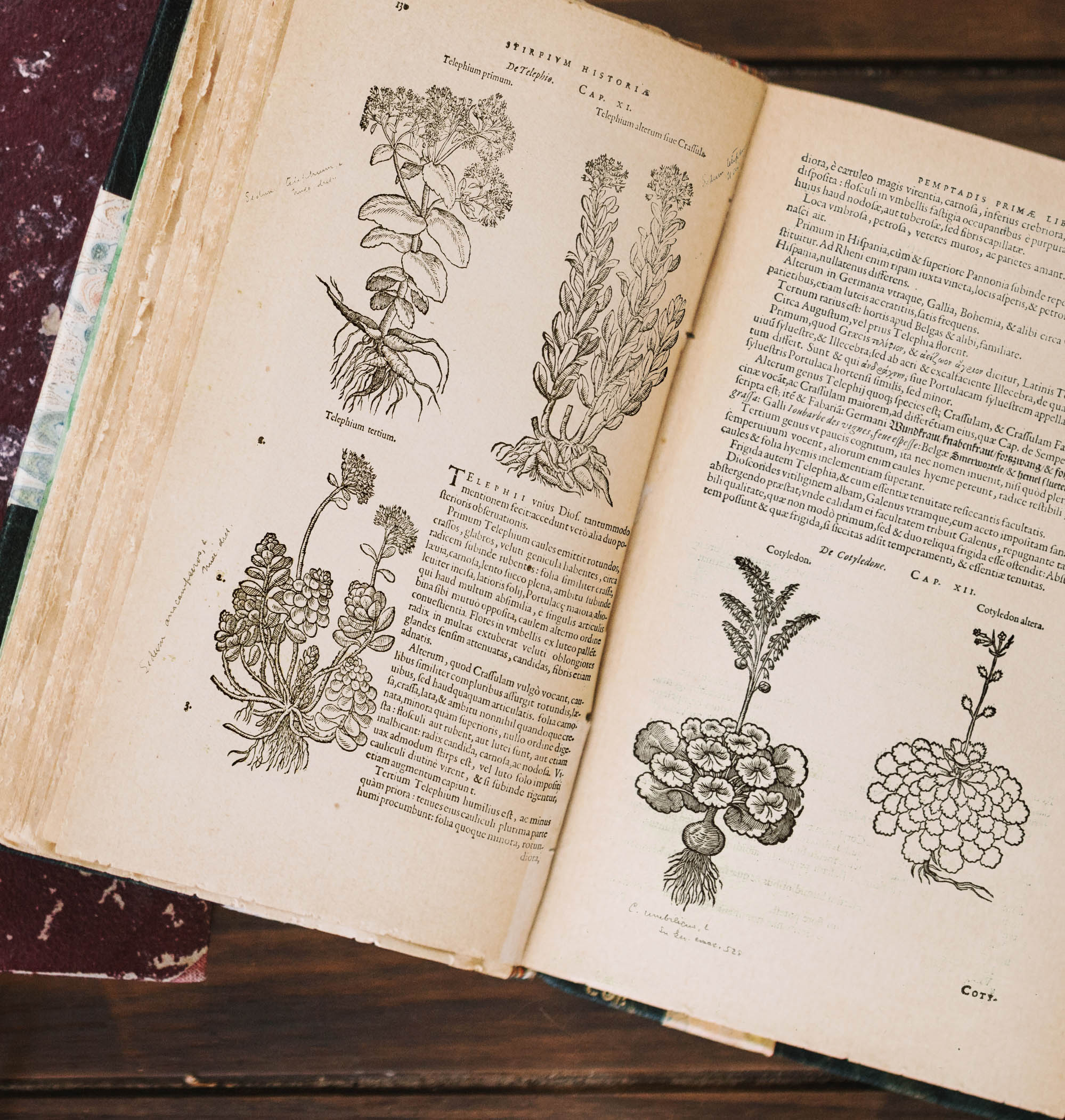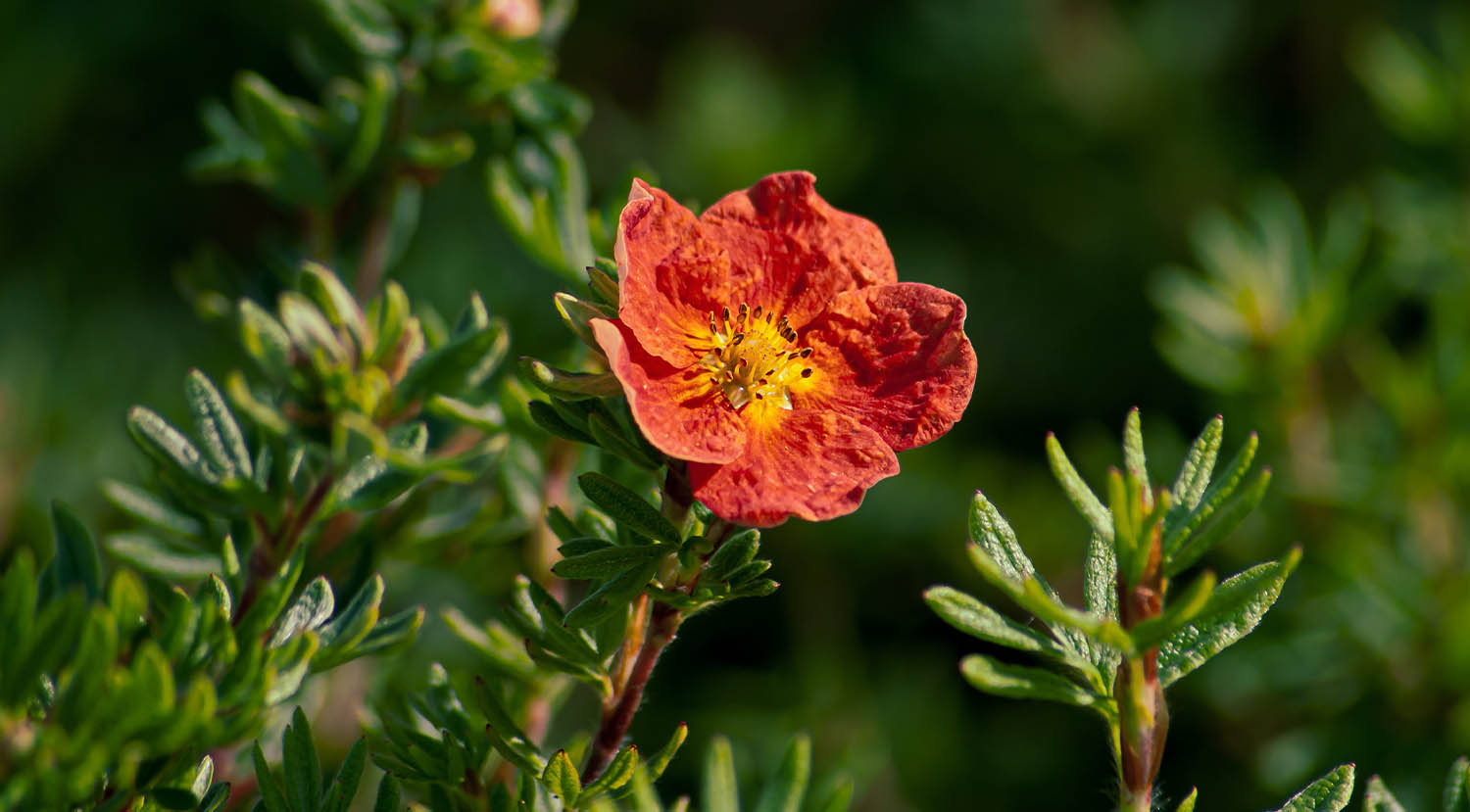Understanding Latin plant names
A definitive guide to the Latin names of plants, and what they can inform you
Within the horticultural industry, plants are nearly always referred to by their Latin names. Even if they’re known by much more widely used common names, like ‘Holly’, the industry will still almost exclusively refer to their Latin or scientific name, which for common holly is of course Ilex aquifolium. Given that there are over 500 different species of plant all part of the same genus, a lot of which are sold commercially, being specific is very important! The Latin (or botanical) names enable us to be far more precise when referring to specific species of plant, especially when there are multiple varieties of similar plants deriving from the same genus, which in this case is Ilex.
Common names for plants can alter between different cultures, as different languages will have their own term for the same plant. For example, in the UK, an English oak tree is referred to commonly as Oak. In France however, it is called ‘chêne pédoncule’, and in Spanish it is referred to it as ‘roble’. This is why having one universal official name for a plant clears up any ambiguity and ensure the collective referral of the correct term for the correct species which in the case of an oak tree is Quercus.
However, the botanical names for plants actually can provide us with a lot more than specificity. The names can tell you a great deal about the species of plant that they’re describing, including their place of origin, growth characteristics leaf or flower colour, its flowering season, and so much more. Understanding the botanical names of plants can help visualise a plant, pick out key characteristics, and this can be incredibly helpful when looking at substitutions, ordering, and the fulfilment of plating scheme requirements.
What’s in a name?
Botanical plant names can technically begin as broadly as identifying the kingdom the plant lies within, which for nearly everything is Plantae, before specifying the subkingdom, super-division, division, class and so on, until the name becomes nine or ten words long! Generally in horticulture we refer to genus, species, variety and cultivar.
To fully understand the difference between these four terms in a plant name, let’s take Viburnum tinus ‘Eve Price’ as an example, and break down the parts of this name that form the whole.
The ‘genus’ is a group of plants with similar characteristics, which in the example above is Viburnum. There are many different species of plants that are all grouped within the Viburnum Genus. The ‘species’ is a subdivision within the genus of a plant identifying a more specific type, which, in the particular example, is tinus. Other species of Viburnum include lantana, and opulus, that possess slightly different characteristics to one another, but fundamentally are all related genetically. The ‘variety’ is a further subdivision within the species and is a naturally occurring variation of that plant. It could have a different shaped leaf, different coloured stem or larger flower for example. Similarly, a ‘Cultivar’ is a man-made variation of the plant, possibly produced by cross pollination, grafting, selection of a particular characteristic or other hybridisation techniques.
From this explanation, it can be deduced that ‘Eve Price’ is either a variety, or a Cultivar, but how do we tell which is which? It’s actually quite simple. A ‘Cultivar’ will always be capitalised, non-italicised, and in inverted commas, whereas a variety will always be italicised, and have no capital letter in its name. Often, it will also be followed by the abbreviation ‘var.’ Therefore, we can deduce that ‘Eve Price’ is a Cultivar, rather than a naturally occurring variety.

Did you know?
In some cases, a breeder of a completely new plant Cultivar can apply for a plant breeders’ right (similar to a patent) which means the plant can only be produced under licence for 25-30 years!
What do the names tell us?
Whilst the botanical names offer us more precision and accuracy when referring to particular species of plants, there is more information about the plant within the name, that can serve as clues to a plant’s origin, growing habits, colour, and foliage type. Of course, there are thousands of examples of descriptors in Latin or other languages within the botanical names of plants, but below we’ve split some of the most commonly used into categories, by what they indicate about the species of plant.

Sarcococca hookeriana

Viburnum davidii
Plants named after their discoverers:
A lot of the plants we know today have resulted from the activities of Victorian plant hunters bringing back seeds and plants from expeditions across the world. Many of these plant hunters now have plant species named after them, whether they discovered them or not! Among these, there are a number of prominent names that appear often, particularly within the commercial landscaping industry:
- Robert Fortune – Fortune was a Scottish botanist who introduced over 250 plants from China and Japan into Britain, Australia, and the USA. Plants with ‘fortune’ in the name include Euonymus fortunei ‘Emerald Gaiety’ and Rhododendron fortunei.
- Sir Joseph Dalton Hooker – A British botanist and explorer, known for being a very close friend of Charles Darwin’s. His most notable discoveries occurred on expeditions to the Himalayas and India. Plants with hookeri or hookeriana in the name, such as Sarcococca hookeriana are named in his honour.
- George Forrest – Scottish botanist, most known for his expeditions to the incredibly biodiverse Yunman province of China, where he brought back an estimated 31,000 plant specemins! Notable plants include Pieris Formosa var. Forestii.
- Père Armand David – A French priest who travelled to China to try and convert the populace to Catholicism, but became fascinated with the diverse nature of the country. Helped the introduction of plants in Europe that carry the name davidii, such as Viburnum davidii.
- Ernest Wilson – British plant collector who introduced around 2000 Asian plant species to the West, of which around sixty are named after him. Notable examples include Corydalis wilsonii and Hypericum wilsonii.
Geographical origins
Plants can also be named after the location from which they originate, are native to, or where they were first discovered by Western botanists.
- Australis – refers to the Southern Hemisphere, sometimes more specifically Australia or New Zealand. E.g. Cordyline australis
- Japonica – refers to Japan or more generally the far East. E.g. Euonymous japonica.
- Occidentalis – refers to the Western hemisphere. E.g. Thuja occidentalis
- Orientalis – refers to Eastern hemisphere. E.g. Helleborus orientalis
- Africanus – refers to the African continent. E.g. Agapanthus africanus
- Asiatica – refers to the Asian continent. E.g. Osmunda asiatica
- Europaeus – refers to the European continent. E.g. Euonymus europaeus.
- Sinensis/chinensis – refers to China and the surrounding area. E.g. Miscanthus sinensis
Plant habitats
Plants’ name can also tell you about the particular habitat in which they grow natively, which can be useful to landscapers and architects to quickly identify a plant’s suitability to a certain environment. For example, if the name refers to being of woodland origin, you can identify quite quickly that the plant thrives in partial shade, as it naturally grows under the canopy of trees.
- Montana/montanum – Refers to plants from mountainous areas. E.g. Clematis Montana
- Aquatica – Refers to wetlands, or damp areas, such as pond margins, or in water. E.g. Pachira aquatica
- Sylvatica – Refers to plants that grow in woodlands or forests. E.g. Luzula sylvatica
- Littoralis – Refers to plants that occur naturally on shorelines, or in coastal areas. E.g. Grisellinia littoralis
- Campestre/campestris – refers to flatlands, such as fields or meadows. E.g. Acer Campestre.
Plant forms and growth types
A plant’s species or Cultivar name can indicate how it grows, and this can be vital information when designing a garden, especially if you’re expecting upright growth, or density of habit.
- Fastigiata – Means ‘upright’ or ‘columnar’, and applies to plants with branches and stems that grow upward rather than outward. E.g. Carpinus betulus ‘Fastigiata’
- Prostratus – refers to plants that are low spreading or flat growing. E.g. Rosmarinus officinalis ‘Prostratus’
- Repens/reptans/procumbens – All three are different ways to refer to plants that are low growing. Reptans is the Latin for ‘crawling’, whilst procumbens translates to ‘fall’ or ‘lean forward’.
- Sempervirens – The literal English translation from Latin is ‘always living’, and refers to plants whose foliage is evergreen. E.g. Buxus sempervirens
- Fruticosa – The Latin word for ‘shrubby’, and refers to plants with a habit of growing in a dense, ‘bushy’ form. E.g. Potentilla fruticosa
- Pumila – Meaning ‘small’ or ‘dwarf’, and refers to plants with a smaller growth height than usual for the particular genus. E.g. Ficus pumila.
- Arboreus – Refers to plants that grow upright and tall like trees, particularly in comparison to other species in the Genus. E.g. Ceanothus arboreus
- Macrorrhizum – Refers to plants that have a tendency to grow large roots. E.g. Geranium macrorrhizum
- Baccata – Translates from Latin to mean plants that produce berries. E.g. Taxus baccata

Potentilla fruticosa

Taxus baccata
Foliage type, size and shape
Within commercial landscaping foliage can be one of the most important aesthetic elements of a plant, particularly in evergreens, as it provides much of the interest in the design year-round. Certain plant Genera can contain species that differ greatly in the size and shape of their foliage, so indicators as to the look of foliage can be valuable when determining a plants suitability or accuracy, particularly when substituting available plants on an order.
- Salicifolia – Translates to ‘willow’ shaped leaves, as the Latin name for willow is E.g. Hebe salicifolia
- Macrophylla/macrophyllus – Plants with this name have large leaves. ‘Macro’ is Latin for large, and ‘phylla’ or ‘phyllus’ refers to plant leaves. E.g. Hydrangea macrophylla
- Microphulla/microphyllus – In contrast to the above, this means a plant has small leaves. E.g. Euonymus microphyllus
- Ovalifolium – This means ‘oval shaped leaves’. Folium is the Latin word for a thin, leaflike structure. E.g. Ligustrum ovalifolium
- Quercifolia – Translates to ‘Oak like leaves’, as ‘Quercus’ is the Latin name for Oak. E.g. Hydrangea quercifolia
- Rotundifolia – Derived from the Latin word ‘rotundi’ which means round. E.g. Prunus laurocerasus ‘Rotundifolia’
- Angustifolia – Refers to plants with narrow leaves. Angustus is the Latin word for narrow. E.g. Lavandula angustifolia
- Tenuifolium – Another name for narrow leaves, derived from ‘tenu’ which is Latin for ‘thin’. E.g. Pittosporum tenuifolium
- Aquifolium – Refers to plants with pointed or prickly leaves. Comes from the Latin word ‘acus’, meaning ‘needle’. Eg. Ilex aquifolium
- Quinquefolia – Meaning ‘five leaves’, and is indicative of a plant with five stems to each leaf. E.g. Parthenocissus quinquefolia
- Aesculifolia – Plants with leaves shaped like those of the horse chestnut. Aescululs is the Latin word for the horse chestnut tree. E.g. Rodgersia aesculifolia
- Albomarginatus – Refers to foliage that have a white border around the edge of the leaf. E.g. Euonymus japonicus ‘Albomarginatus’
Flower types and shapes
As well as the leaves of a plant, the name can also indicate the different types and shape of the flowers. This can be valuable information to help get a better understanding of what the plant’s flowers will look like, even if the plant is not in season.
- Grandiflora – Translates to large flowers. E.g. Magnolia grandiflora. Macrantha also translates to the same. E.g. Escallonia rubra var. macrantha
- Stellata – Latin word for ‘star’. Refers to plants with ‘star-like’ flowers. E.g. Magnolia stellata
- Pauciflora – ‘Pauci’ is Latin for ‘few’. Refers to plants that do not produce a lot of flowers. E.g. Eucalyptus pauciflora.
- Florida – Latin for ‘flowering’. Refers to plants that produce flowers, or produce a lot of flowers. E.g. Weigela Florida
- Tulipifera – Refers to plants that produce ‘tulip-like’ flowers. E.g. Liriodendron tulipifera
- Flora Plena – Refers to plants that are ‘double flowered’, meaning the flowers have extra petals. Derives from the Latin for ‘with full flower’. E.g. Camellia sinensis ‘Flora Plena’
Plant, leaf and flower colours
Lastly, a plant’s name can also give an indication of the colour of either the flowers, the foliage, or even the stems. Having a solid grasp on the various Latin colours used in plant names can help very quickly identify a particular variance of plant. Often with colours, rather than a variety, or a Cultivar, you’ll have another sub-category of the plant’s name beyond the species, called the ‘forma’, which is where you may see an f. in the middle of the name. E.g. Vinca minor f. alba. This is referring to a naturally occurring colour variance, as opposed to a deliberately cultivated one.
- Sanguinea/sanguineum – Latin word for ‘blood-red’. Generally used in reference to red stems. E.g. Geranium sanguineum
- Argenteum/Argentea – From the Latin for ‘of money’, or ‘of silver’, and refers to ‘silvery’ plants. E.g. Lamium maculatum ‘Argenteum’
- Alba – Latin word for ‘white’, and generally is used to refer to white flowers. E.g. Vinca minor alba
- Atropurpurea – Means ‘dark purple’ and normally is referring to purple flowers. E.g. Vinca minor ‘Atropurpurea’
- Caerulae – Refers to plants with blue leaves in particular. From the latin which can also mean ‘of sky’, or ‘of sea’. E.g. Sesleria caerulae
- Aurea – Derived from the Latin word for ‘gold’. Refers in particular to gold or yellow stems. E.g. Phyllostachys aurea
- Nigra – Translates to ‘black’, but normally in the plant world this is a dark brown or purple, rather than a deep black colour. E.g. Phyllostachys nigra
- Rubra – Latin word for ‘red’, and often refers to particularly fiery red leaves in autumn. E.g. Quercus ruba
- Coccinea – Translates to ‘scarlett’, and often refers to either the berries or flowers of plants. E.g. Pyracantha coccinea
- Virens – Meaning ‘green’ or ‘fresh’, and generally refers to a plant’s green foliage. E.g. Santolina virens
Putting it into practice
Using this information, we can take a long latin plant name, such as Euonymus japonicus ‘Microphyllus Albomarginatus’, and begin to break down what that means, and what identifying features we’re looking for with this particular plant. Firstly, Euonymus is the Genus, and japonicus as we have learned refers to plants that originated in either Japan or the far east in general. Microphyllus means small leaves, and albomarginatus refers to plants with a white border around their leaves. Therefore, we know that with this plant we’re looking for a Euonymus originating from Japan, that has small leaves with white borders around them.
Alternatively, let’s look at Taxus baccata ‘Fastigiata Aurea’. From the information above, we can confirm we’re looking for a berry producing plant (baccata) that grows upright (fastigiata) and grows yellow coloured foliage (aurea).
To find out more about the plants that Greenwood offers, please get in touch with the G Team today.

